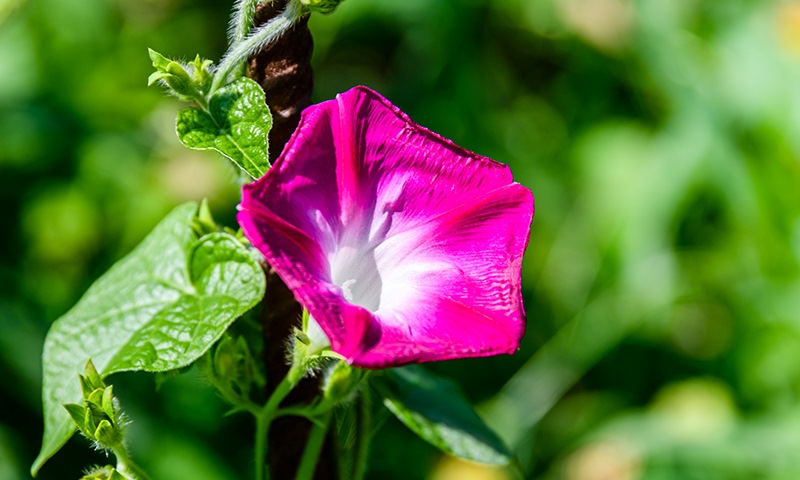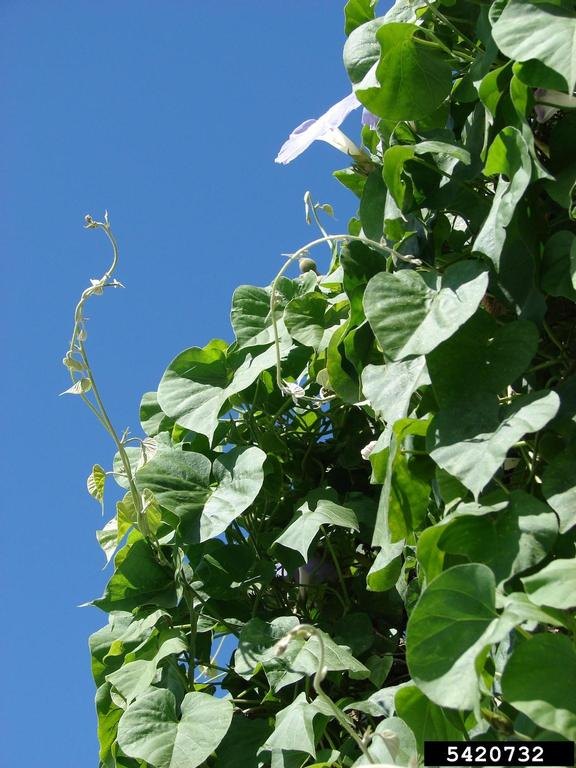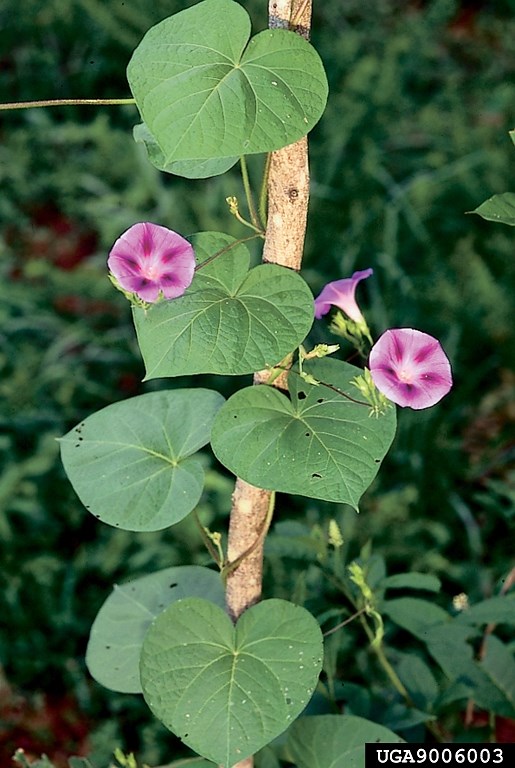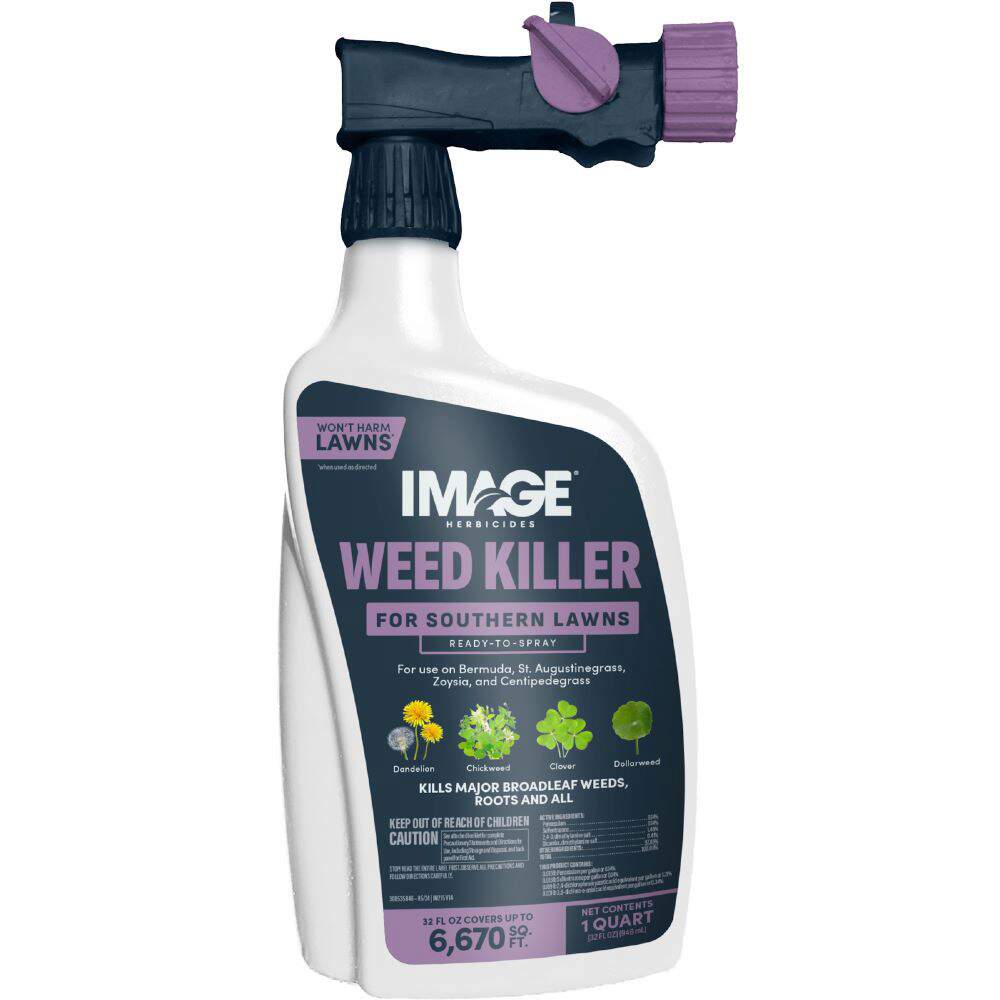HOW TO IDENTIFY MORNING GLORY
Morning glory is an annual, fast-growing flowering vine that is sometimes cultivated as an ornamental plant. However, without close oversight in warmer climates, it can quickly become an aggressive, troublesome weed. You may find it on fences, trellises or other plants, and vines can grow up to 15 feet in length (although about six feet in length is more common).
A number of different Ipomoea species are considered morning glories. Their trumpet- or funnel-shaped flowers grow from two to six inches across, and open in the mornings. The color of the flower varies depending on the species and can range from blue to violet, red, pink or white. For example, the heavenly blue morning glory's flowers are blue and four to five inches across. In contrast, the Grandpa Ott's morning glory flowers are dark purple with a red center and only grow to about two to three inches across.
Morning glory leaves are heart-shaped and large, with deep lobes near the base. Some plants may also have three-lobed leaves.
The appearance of the vine's stems can vary depending on the species. Ivyleaf morning glory, for example, has hairy stems, while the pitted morning glory has smooth stems.
The plant's fruits are pod- or capsule-shaped, with two to four compartments. The wedge-shaped seeds inside are dark brown.
Keep in mind, this isn't the only weed that sometimes is called morning glory. A very different weed called bindweed (Convolvulus arvensis) is also sometimes referred to as morning glory. But true morning glories have larger leaves and larger flowers.
WHERE AND WHY MORNING GLORY GROWS
Morning glory can be found throughout the United States, but it can become particularly aggressive and hard to control in warmer environments. In fact, the plant can be so invasive that some states have added it to their prohibited lists of noxious plants.
The plants start blooming in the early summer, and typically don't survive frosts. However, this weed can grow from self-sown seeds produced in previous years. This means it will often sprout in the same location when the weather gets warmer. And because the seeds have hard shells, they can survive for a long time in the soil, sometimes sprouting decades later.
Morning glories prefer to grow in areas that get full sun and in soil that's at least 60° Fahrenheit and well-drained. They tolerate dry soil better after the seedling stage.
HOW TO CONTROL MORNING GLORY
Before treating morning glory or any other weeds, review your herbicide's product label closely to make sure it's safe for your lawn's grass type. Some grasses are sensitive to certain herbicides, so double-check the labels before using any product. And remember, herbicides should only be applied to mature, established lawns, not newly seeded areas.
Image Herbicides offer highly effective liquid products to kill or control morning glory:
- Image Herbicides Crabgrass, Nutsedge & Weed Killer for Lawns Ready-to-Spray is a selective, post-emergent, water-based formula that kills tough weeds to the root. To use, just attach the ready-to-spray container to a garden hose. It mixes for you as you spray. It can be used on listed southern and northern turfgrasses.
- Image Herbicides Crabgrass, Nutsedge & Weed Killer for Lawns Concentrate is a dual-action formula designed for use with a pump-style sprayer. It can be used on large areas or spot treatments. This formula kills weeds to the root and can be used on listed southern and northern turfgrasses.
- Image Herbicides Weed Killer for Southern Lawns Ready-To-Spray is a fast-acting, post-emergent herbicide that kills major broadleaf weeds to the roots and starts acting immediately. Just attach a garden hose to the spray, and it will mix the product for you as you go.
- Image Herbicides Weed Killer for Southern Lawns Concentrate is a fast-acting, post-emergent herbicide that's easy on southern turfgrasses and tough on broadleaf weeds. The fast-acting formula is designed for use with a pump-style sprayer and starts working immediately.
Morning Glory Control Tip: Try to remove this plant while it's a small seedling. If it's already growing vines around another plant, it can be tough to remove without damaging the plant it's growing on.
Always read product labels thoroughly and follow instructions, including guidelines for lawn grasses, frequency of applications and seasonal maximums that may apply.
MORNING GLORY GALLERY

Leaves of Different Morning Glory Species

Morning Glory Flower, Close-up

Morning Glory Flower, Close-up

Morning Glory Seeds, Close-up

Morning Glory Patch

Morning Glory Vine





